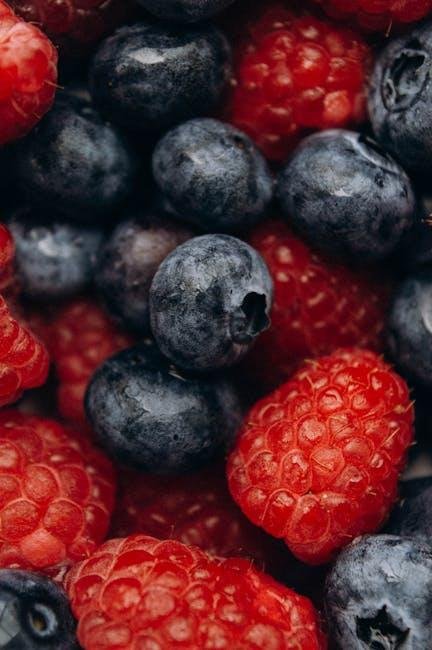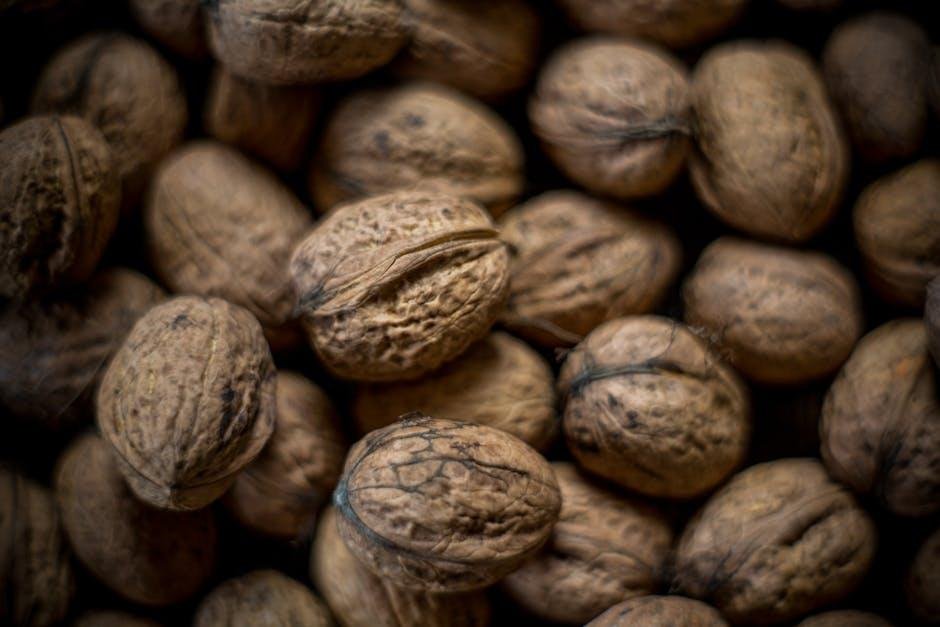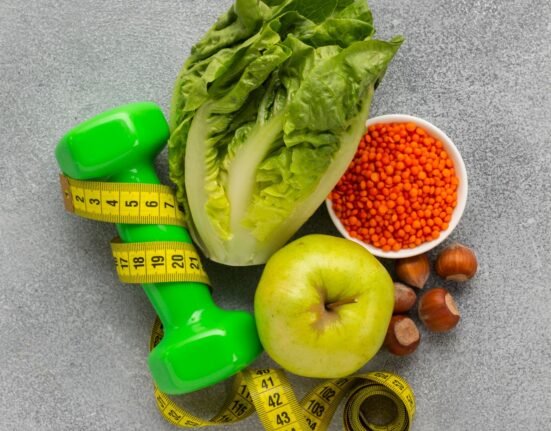In the intricate symphony of our bodies, nutrients play the essential notes that keep us vibrant and thriving. Yet, even in a world abundant with food choices, many find themselves unknowingly starved of crucial vitamins and minerals. These common nutrient deficiencies, subtle yet impactful, can quietly undermine our health and vitality. Understanding these gaps and learning how to bridge them is key to nurturing a balanced, resilient body. In this article, we explore the most prevalent nutrient shortfalls and practical ways to restore harmony to your nutritional well-being.
Table of Contents
- Understanding the Hidden Signs of Nutrient Gaps
- The Impact of Vitamin D Deficiency on Overall Health
- Spotlight on Iron: Causes, Consequences and Dietary Solutions
- Mastering Magnesium Intake for Optimal Body Function
- The Role of Omega-3 Fatty Acids and How to Boost Levels Naturally
- Practical Tips for Balancing Nutrients Through Everyday Meals
- Q&A
- Wrapping Up

Understanding the Hidden Signs of Nutrient Gaps
Often, the most common signs of nutrient gaps lurk beneath the surface, manifesting in subtle ways that many overlook. Fatigue that won’t lift, brittle nails, or persistent brain fog might not be just everyday annoyances—they could be your body’s quiet pleas for specific nutrients. Recognizing these hidden signals is the first step toward real nourishment and well-being. For instance, an unexpected craving for ice or unusual mouth sores might hint at an iron deficiency, while frequent muscle cramps can point to a shortage in magnesium or potassium.
Understanding these clues allows for smarter dietary adjustments before symptoms escalate. Here’s a quick reference list to help decode your body’s messages:
- Cracked lips: Often signal a lack of B vitamins, especially riboflavin.
- Unexplained bruising: Could indicate a Vitamin C or K deficiency.
- Slow wound healing: Associated with low zinc levels.
| Symptom | Likely Nutrient Gap | Food Fixes |
|---|---|---|
| Persistent fatigue | Iron, Vitamin B12 | Leafy greens, eggs, red meat |
| Brittle nails | Biotin, Zinc | Nuts, seeds, whole grains |
| Muscle cramps | Magnesium, Potassium | Bananas, spinach, avocado |

The Impact of Vitamin D Deficiency on Overall Health
Vitamin D plays a crucial role in maintaining more than just bone health. Its deficiency has been linked to a wide array of health issues, ranging from weakened immune response to mood disorders like depression. When the body lacks sufficient vitamin D, the efficiency of calcium absorption drops, resulting in brittle bones and, in severe cases, conditions such as osteomalacia or rickets. Beyond bones, low vitamin D levels can increase susceptibility to infections, chronic fatigue, and even cardiovascular problems, making it vital to monitor and address any insufficiencies promptly.
Addressing this deficiency involves more than just diet—it’s about incorporating lifestyle habits that boost natural synthesis and absorption. Here are essential ways to help restore optimal vitamin D levels:
- Safe sun exposure: Aim for 10-30 minutes several times a week, depending on skin sensitivity.
- Foods rich in vitamin D: Fatty fish, fortified dairy products, mushrooms exposed to UV light.
- Supplements: Choosing the right dosage based on medical advice.
| Symptom | Related Impact |
|---|---|
| Chronic fatigue | Low energy levels |
| Bone pain | Poor calcium absorption |
| Frequent infections | Immune system weakness |
| Depression | Mood regulation issues |

Spotlight on Iron: Causes, Consequences and Dietary Solutions
Iron is a cornerstone mineral vital for oxygen transport and energy production within the body. Deficiency in iron, often heralded by symptoms such as fatigue, pallor, and weakened immunity, can stem from various causes including insufficient dietary intake, chronic blood loss, or absorption issues in the digestive tract. Women of childbearing age, vegetarians, and individuals with certain medical conditions are particularly susceptible to iron deficiency, making it crucial to recognize and address this nutrient gap promptly.
Effective dietary strategies to boost iron levels include:
- Incorporating heme iron sources like lean red meat, poultry, and fish, which are more readily absorbed.
- Combining plant-based iron sources, such as lentils, spinach, and fortified cereals, with vitamin C-rich foods to enhance absorption.
- Avoiding excessive consumption of calcium or tannin-rich drinks, like coffee and tea, during iron-rich meals.
| Food Source | Iron Content (mg per 100g) | Absorption Type |
|---|---|---|
| Beef Liver | 6.2 | Heme |
| Lentils | 3.3 | Non-heme |
| Spinach | 2.7 | Non-heme |
| Fortified Cereal | 4.5 | Non-heme |

Mastering Magnesium Intake for Optimal Body Function
Magnesium is a subtle powerhouse within the body, playing a crucial role in over 300 enzymatic reactions, from energy production to muscle function. Despite its importance, many individuals unknowingly suffer from inadequate magnesium levels, which can manifest as fatigue, muscle cramps, or even disruptions in heart rhythm. To achieve the delicate balance this nutrient demands, it’s essential to incorporate magnesium-rich foods into your daily regimen. Leafy greens like spinach, nuts such as almonds and cashews, and whole grains remain some of the most bioavailable sources, offering an effortless way to boost your intake naturally.
Understanding how to optimize absorption is equally important. Factors like excessive alcohol consumption, high caffeine intake, and certain medications can inhibit magnesium uptake. To safeguard your body’s magnesium stores, consider these simple yet effective strategies:
- Balance your diet with a variety of magnesium-rich foods to ensure consistent supply.
- Limit processed foods that often lack essential minerals and can exacerbate deficiencies.
- Stay mindful of consumption habits, moderating substances that interfere with absorption.
| Food Source | Magnesium per 100g (mg) |
|---|---|
| Spinach (cooked) | 87 |
| Almonds | 270 |
| Black Beans | 70 |
| Dark Chocolate (70-85%) | 228 |

The Role of Omega-3 Fatty Acids and How to Boost Levels Naturally
Omega-3 fatty acids are essential fats that play a crucial role in brain function, heart health, and reducing inflammation. Despite their importance, many people don’t get enough of these healthy fats in their diet. The body cannot produce omega-3s on its own, which means you need to obtain them through food or supplements. Low omega-3 levels have been linked to issues like cognitive decline, depression, and increased risk of cardiovascular diseases.
Boosting your omega-3 levels naturally is easier than you might think. Focus on incorporating foods rich in EPA and DHA, the two most beneficial types of omega-3 fatty acids. Here are some top sources to consider:
- Fatty fish such as salmon, mackerel, sardines, and trout
- Chia seeds and flaxseeds, great for vegetarians
- Walnuts, a tasty snack loaded with ALA omega-3s
- Algal oil, a plant-based supplement derived from algae
| Food Source | Omega-3 Content (per 100g) | Benefit Highlights |
|---|---|---|
| Salmon | 2,260 mg | Rich in EPA & DHA, supports heart health |
| Chia Seeds | 17,830 mg (ALA) | Plant-based omega-3, promotes digestion |
| Walnuts | 9,080 mg (ALA) | Great for brain function and inflammation |
| Algal Oil | 400–500 mg (EPA & DHA) | Vegan-friendly source of omega-3 |

Practical Tips for Balancing Nutrients Through Everyday Meals
Achieving a balanced intake of essential nutrients doesn’t require drastic changes; small, consistent adjustments to your daily meals can make a significant difference. Start by incorporating a variety of colorful fruits and vegetables, which are naturally rich in vitamins and minerals. For instance, leafy greens like spinach and kale pack a punch of iron and calcium, while berries and citrus fruits boost your vitamin C levels, aiding nutrient absorption. Incorporate whole grains such as quinoa and brown rice instead of refined grains to increase fiber intake and maintain steady energy levels throughout the day. Don’t overlook healthy fats found in nuts, seeds, and avocados—they support brain health and enhance the absorption of fat-soluble vitamins.
Planning meals with nutrient diversity in mind can be simplified using the following guidelines:
- Protein variety: Include both plant-based (beans, lentils) and animal (chicken, fish) sources to cover all amino acids and important micronutrients like B12 and zinc.
- Hydration: Water aids digestion and nutrient transport; aim for 8 glasses daily, adjusting for activity and climate.
- Smart snacking: Opt for trail mix or yogurt instead of processed snacks to fill nutritional gaps between meals.
| Meal | Nutrient Focus | Example Foods |
|---|---|---|
| Breakfast | Fiber & B Vitamins | Oatmeal with berries & chia seeds |
| Lunch | Iron & Vitamin C | Spinach salad with grilled chicken & orange slices |
| Dinner | Omega-3 & Calcium | Salmon with steamed broccoli & brown rice |
Q&A
Q&A:
Q1: What are nutrient deficiencies, and why should I care about them?
A1: Nutrient deficiencies occur when your body doesn’t get enough essential vitamins or minerals to function properly. Think of it as running low on fuel; without the right nutrients, your energy dips, immunity weakens, and overall health can decline. Catching and correcting deficiencies early keeps your body humming like a well-oiled machine.
Q2: Which nutrient deficiencies are the most common worldwide?
A2: The usual suspects include iron, vitamin D, vitamin B12, calcium, and magnesium. Each plays unique roles—from keeping your bones strong to ensuring your blood carries oxygen efficiently. Deficiencies often sneak up due to diet gaps, lifestyle habits, or absorption issues.
Q3: How do I know if I have a nutrient deficiency?
A3: Symptoms can be subtle or glaring, like fatigue, brittle nails, frequent colds, muscle cramps, or even mood swings. However, symptoms overlap, so the best bet is a blood test recommended by your healthcare provider to pinpoint exactly what you’re missing.
Q4: What fixes an iron deficiency?
A4: Incorporate iron-rich foods like lean red meat, spinach, lentils, and fortified cereals. Pair them with vitamin C-rich foods to boost absorption—think citrus fruits or bell peppers. In more severe cases, a doctor might advise supplements.
Q5: How can I boost my vitamin D levels naturally?
A5: Sunshine is your best friend here—about 10-30 minutes of midday sun several times a week can stimulate vitamin D production in your skin. Dietary sources include fatty fish like salmon, fortified dairy products, and egg yolks. Supplements can help when sunlight is scarce.
Q6: What about vitamin B12—who’s at risk and how do I fix it?
A6: Vegans, older adults, and those with certain digestive conditions often struggle with B12 since it’s predominantly found in animal products. Fixes include fortified plant milks, nutritional yeast, and supplements if needed, ensuring your nerves and blood stay healthy.
Q7: Calcium deficiency: What are the warning signs and solutions?
A7: Signs include muscle spasms, weak nails, and bone pain. Dairy products, leafy greens, almonds, and fortified juices pack calcium. Regular weight-bearing exercise also helps keep your bones strong.
Q8: Magnesium—why is it important and how can I correct its deficiency?
A8: Magnesium supports muscle and nerve function, energy production, and bone health. A deficit might cause cramps, weakness, or fatigue. Nuts, seeds, whole grains, leafy greens, and dark chocolate help replenish magnesium naturally.
Q9: Can I get all my nutrients from diet alone?
A9: Ideally yes, but modern lifestyles, restrictive diets, or health conditions sometimes make supplements necessary. It’s wise to consult a professional to tailor a plan based on your individual needs.
Q10: What lifestyle changes can help prevent nutrient deficiencies?
A10: Eat a diverse, balanced diet rich in whole foods, get sensible sun exposure, manage stress, stay active, and schedule regular health check-ups. These habits build a strong foundation for nutrient absorption and overall wellness.
By understanding the signs and smartly adjusting your diet and lifestyle, you can nip common nutrient deficiencies in the bud and keep your body thriving.
Wrapping Up
In the intricate dance of nutrients that sustain our bodies, even the smallest misstep can ripple into noticeable health challenges. Recognizing common nutrient deficiencies is the first stride toward reclaiming balance and vitality. Whether through mindful eating, thoughtful supplementation, or lifestyle adjustments, addressing these gaps empowers us to nurture our well-being with intention. As we journey forward, let a well-informed plate be your compass, guiding you toward a healthier, more resilient you. After all, the key to wellness often lies hidden in the simplest, most essential elements we sometimes overlook.















Leave feedback about this